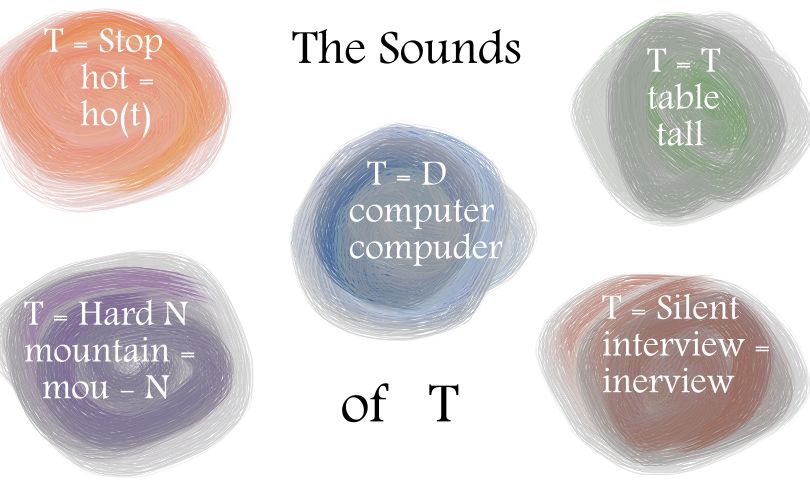| English Online with Speak Method |
||

Say "time," "dime"
and
"nine." Notice how T, D, and N
are made with the tongue in the same place inside the mouth. This will help you understand the rules
below.
| T
Rule |
Rule |
Notes on Rule |
Examples |
T = T |
The regular T
sound is almost always used when "t" is the first letter
of a word. |
ST or TS always keep the regular T sound as well. | table,
tall, test, best all first letter T's |
T = D Between Vowel Sounds |
When T is
between two vowel
sounds (A,E,I,O,U) or between a vowel and L or R (these letters are
called
semi-vowels to linguists), it becomes a D sound. In phonetics, this sound is called a "flap," which means the tongue touches the roof of the mouth quickly. |
It should be a soft, light sound. This is the key difference between British and American speech. This rule is widely applicable— you may find a few exceptions, but you will be more surprised by how well the rule works. ** |
Practice with: computer, water,
bottle, heater, better, matter, ability, university, put it on, great idea Say: compuder, wader, bodul, header, beder, mader, abilidy, universidy, pudidon, gread'idea |
T = Silence When after N |
When T
comes after N, the T sound is dropped in many words.
This rule is not as important, as it's informal. It is mostly used when people speak quickly, but it's good to be able to listen for this change. |
It is
also good to remember not to pronounce a strong T at the middle or end of a word. When not at the beginning or stressed, a T should be fast and soft or barely heard at all. |
Practice with: interview,
interstate, international, wanted, don't know, printer, enter, twenty Say: inerview, inerstate, inernational, wanned, don'know, priner, ener, tweny |
T = Hard N When before N |
When T is
before an N, the
sound is stopped
and turns into a hard N. The final N should be strong. This sound is more difficult. |
It may be best to listen for it for a while and then start trying to use it. | Practice with: mountain, fountain,
curtain, written, forgotten, important, sentence Say: mou-N, fou-N, cur-N, wri-N, forgo-N, impor-Nt, sen-Nce |
T = Stopped Sound |
When T is
at the end of a word
(and this is
not followed by a vowel), the sound stops. To say this correctly, emphasize the preceding vowel, put your tongue into place and simply stop the sound. |
This one too can be difficult to master, so listen for it first, especially when people say "It's hot!" or "That's that." | hot, hat, mat, fat, lot, rat, pat, foot, want, sit, sat, fit, bat, pot |
**
This T = D rule applies
also when T is at the end of a word and
the word is followed by a vowel sound, such as "put it on." This phrase would read
"pudidon." This is very common
in expressions that use "what" and "that," as in "what
a good idea" or "wada good idea."
Learn More Learn by Language T Sounds: 500 Words English Pronunciation News: T Sounds Speak Method home page |